From the November issue of Apollo: preview and subscribe here
Lee Ufan’s contemplative work includes minimalist paintings and sculptural interventions. The itinerant artist talks to Apollo about philosophy, stones, and why he prefers being on his own
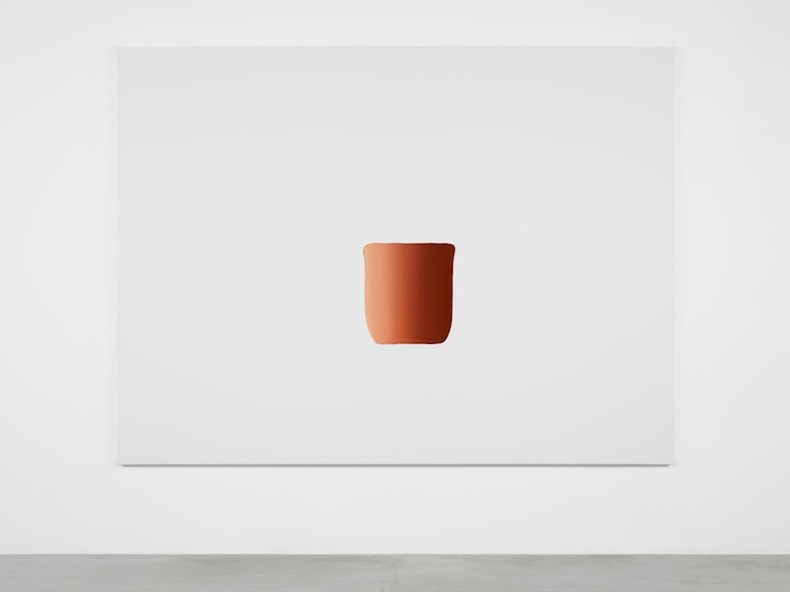
‘Dialogue’, 2014, Lee Ufan, oil on canvas, 218 x 291 x 6cm. Courtesy Lisson Gallery, London; © the artist
For over 40 years I have been a kind of déraciné’, says Lee Ufan (b. 1936), ‘and I’m really still continuing on a pilgrimage around the world.’ We are sitting in the artist’s Paris studio on a brilliant early autumn day. A few minutes away is rue Victor Massé, where Degas lived in his later years, and a short walk uphill towards Montmartre is rue Lepic, where Vincent van Gogh shared an apartment with his brother Theo. This is the heart of painters’ Paris, and Lee is now, I suppose, a member of the École de Paris, the eclectic group of artists from far and wide who once made the city their home. Certainly, he is an eminent member of what you might call the École du Monde: that is, the global art world. He has exhibited in New York, London – where recent solo shows include Lisson Gallery and Pace Gallery – and at the Venice Biennale, and the Palace of Versailles has been surrounded by his works. On the Japanese island of Naoshima, there is a museum dedicated to his art.
Lee’s journey here began 79 years ago in Haman County, South Korea, where he was born in 1936. When he appears at the door of his work room to greet me and my interpreter, Kyoko, however, that date is hard to believe. His face is unlined and he looks, moves, and sounds like a much younger man. Although he has an assistant, who lets us in at the main door, you get the impression that his work is a solitary affair. As soon as we arrive, a pot of green tea is made for us, and it is Lee himself who makes it. For such a famous artist, his work place is surprisingly modest: a smallish room in an old building, with big canvases stacked around the walls. Only one of these is turned outwards, so the paint surface is visible – a work in progress. It seems to consist of a single, large brushstroke; a rounded, tapering oblong of pigment in the centre. This coloured area, however, is not solid, but delicately shaded from dense pink to pale. And it is the result not of one brushstroke, but many. ‘Do you see this picture?’, he asks (via Kyoko, since his English is limited and my Japanese and Korean nonexistent). ‘It seems very simple, but I start work on it at nine o’clock in the morning and carry on until three or four in the afternoon. And not only for one day; I repeat the same process for three, four, five times. If even then it doesn’t please me I start it again. After all these years, it is very difficult for me to say when a particular work of art is finished. Even Leonardo da Vinci struggled to finish the Mona Lisa; it is very difficult for artists to put down their brushes.’
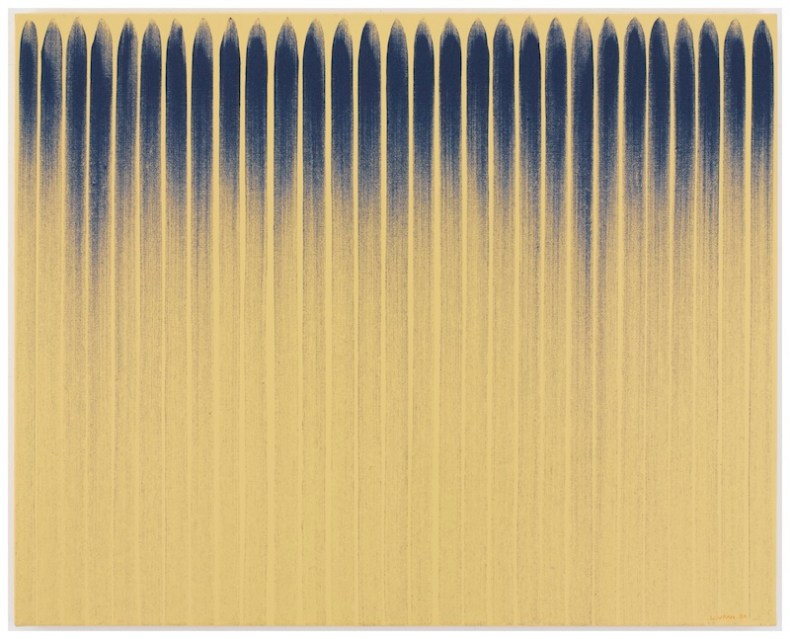
‘From Line’, 1982, Lee Ufan, glue and mineral pigment on canvas, 112.4 x 145.4cm. Courtesy Pace London; © the artist
When he paints, the canvas is laid on the floor while he lies on a wooden board, set up like a bridge, above it. Since childhood, he has preferred to work like this, with the picture horizontal on the ground. ‘One reason is because in that way I can really feel I am inside the canvas. I throw myself into it, so as to concentrate.’ Absolute concentration is essential to what Lee does. One of his most celebrated series of works, From Line, dating from the 1970s and early ’80s, consists of single strokes, amazingly long and even, descending from the top to the bottom of a white or yellow canvas. This looks, in painting terms, like a high-wire act: one slip and everything would be spoilt. Though subtly different, each mark has to be essentially the same – perpendicular, utterly confident. It is, you might say, painting as performance. He prefers to use a sporting analogy: ‘Artists train themselves in the same way as athletes do. Let’s take tennis as an example. When you play you are facing your opponent, so you have always to think about how the adversary is going to respond to you. My painting is a game, with the canvas as my opponent. There is a tension between myself and the canvas, and the brushstroke is the product of that tension. So I am not entirely in control.’
In one way, as Lee describes it, what he does sounds very much like performance art. ‘The body is crucial, our body does not belong just to us. It creates a relationship with the world. And this relationship is the most interesting thing of all.’ His way of working, with the canvas on the floor so the artist is immersed within it, sounds rather like Jackson Pollock’s method. The results have more of the elegant austerity of Barnett Newman: one of the works dating to 1980 in his From Line series, comprises a single vertical stroke. In a way, this looks like Lee’s version of Newman’s celebrated ‘zip’, but unlike the American master’s paintings, his is not a piece of clean geometry. Lee’s stroke is visibly the result of an action. You can see how the paint is denser and darker at the top, becoming fainter as the line continues and the pigment runs out. It is a trace in time.
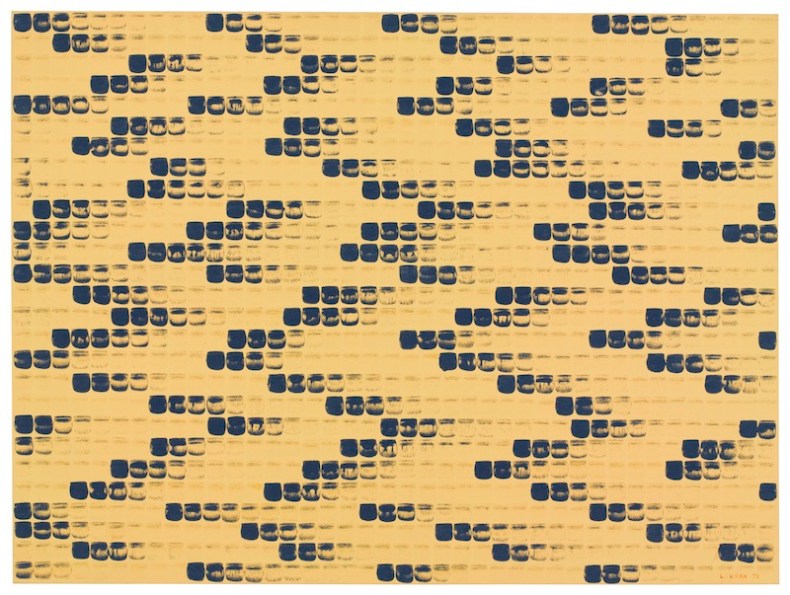
‘From Point’, 1978, Lee Ufan, glue and mineral pigment on canvas, 97.5 x 130.5 cm. Courtesy Pace London; © the artist
Lee, however, does not accept this – or any – connection to other painters, eastern or western. ‘It may be true that some of my paintings look similar to the paintings of certain artists, although they are not really related. I admit that in the beginning of my career, I was a bit stimulated by Pollock or Newman. On the other hand, there are people who tend to associate my paintings with traditional Asian painting because I was born in Asia. However, my paintings are just Lee Ufan’s paintings.’ He adds: ‘I have always asked myself about how a painting comes into existence.’ It is indeed an interesting and elusive question. His remark reminds me of a recent comment made by a very different artist, David Hockney: ‘How would you know what a picture means? How would I know what my pictures mean?’
Lee and Hockney are near contemporaries. He was part of an international generation of artists who reconfigured the boundaries of art in the 1960s and ’70s. This incorporated not only art as action, but also, in the west, such movements as conceptual art, land art, arte povera, and minimalism. Lee was a leading member of a parallel group in Japan, which was given the name Mono-ha, or ‘School of Things’. Works from this school certainly have a family resemblance to their occidental avant-garde counterparts. The work that first attracted Lee to Mono-ha was Phase – Mother Earth (1968) by Sekine Nobuo. This outdoor sculpture consists of a deep hole in the ground of a park in Kobe, beside which is a perfect cylinder formed from the soil extracted from that hole – so, you might say, an exercise in minimalist land art. After he saw this, Lee wrote an essay about it, entitled Beyond Being and Nothingness – A Thesis on Sekine Nobuo. Subsequently, he became not only one of the leading artists of Mono-ha, but also its theoretician. It is not coincidental that Lee’s piece on Sekine Nobuo makes reference to Jean-Paul Sartre’s essay L’Être et le néant. He had started out as much a writer and philosopher as an artist.
As a boy, Lee learned to paint, but with no intention of becoming a professional artist. ‘At that time in Korea, and also in Japan, there was a tradition, especially in old fashioned families, in which boys were given personal education at home. This included painting, calligraphy and the reading of Chinese classics. But this was part of the general culture of a civilised man. By doing calligraphy, you learnt how to write, by drawing and reading literature we gained our culture.’ Lee’s route into the art world was an indirect one. ‘When I was a high-school student I was interested in literature; I really wanted to be a poet or a novelist. But my marks at school were not good enough for me to get into university to study literature.’
A school master encouraged him to apply to do art instead, since he was very good at painting. He began a course at the College of Fine Arts at Seoul National University, but after a couple of months his father asked him to travel to Japan to take some medicine to his uncle, who was unwell. Once there, this uncle suggested that he stay and study literature and philosophy at a Japanese university, which he did, thus beginning his life as a wanderer. Though he insists philosophy has no direct relationship to his art, he retains an enthusiasm for a number of philosophers, both eastern and western, among them the Taoist sage, Lao Tzu, and the pre-Socratic Greek thinker, Heraclitus.
‘I love Heraclitus!’ he exclaims, when I mention the latter, ‘Especially his sayings that you cannot step into the same river twice and that everything is ever moving, always changing. I totally agree – the idea of everything being in flux really attracts me.’ He does not accept the suggestion that his study of philosophy has affected his painting and sculpture. ‘In my everyday life, I use logical ways of thinking that I learnt. So in some sense it has been useful; but having said that, I don’t want to turn philosophy into art. Philosophy is based on reflection, thinking. Art is an action, based on our emotion or perception.’
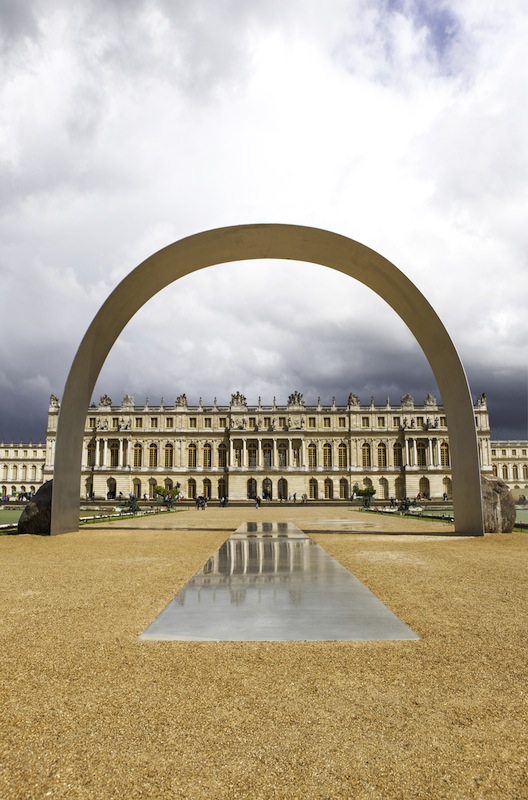
‘Relatum – The Arch of Versailles’, installation view from the 2014 exhibition ‘Lee Ufan Versailles’ at the Château de Versailles. Photo: Tadasu Yamamoto
On the other hand, there is a distinctly metaphysical, even cosmological aspect to his work. This emerges when we turn to the subject of stones, which feature very frequently in his sculptural installations. Lee is meticulous in the choice of these. He outlined his requirements to curator Alfred Pacquement, when discussing his extraordinary series of works which were shown in the grounds of Versailles in 2014. He wanted his stones, Lee explains, ‘to be massive, hard, characterless, with a squat shape’. ‘I need stones that have been polished by earth and water, wind and rain over a long period; they should not evoke any particular image, they must have a force of abstraction.’ At Versailles his installations included a monumental but simple steel arch framing the facade of the palace, anchored on each side by a natural boulder, with a metal mirror beneath. This managed to be at once minimal, grand, eastern and western – in conversation with, but quite different to the baroque classicism of Versailles’ architecture and the formal fountains, parterres, topiary, and hedges designed by Le Nôtre. Its title was Relatum – The Arch of Versailles. Other works were placed around the site, each with titles beginning with Relatum (‘Refer’) – as all his sculptures have begun since the late 1960s. For the last five years, most of these works comprise steel plates in juxtaposition with rocks that look as large and smooth as they did when the artist first found them.

‘Relatum – Le Baton du Geant’, installation view from the 2014 exhibition ‘Lee Ufan Versailles’ at the Château de Versailles. Photo: Tadasu Yamamoto
There have been plenty of stones in the art of the last half century, but they are not used by other artists in quite the same manner as Lee. Richard Long’s stones, for example, arranged in lines and circles, speak of place, as suggested by their titles: Norfolk Flint Circle, for example, or Georgia Granite Circle. They are concerned with the differing geology and topography the artist encounters in his walks across the world. Lee, in contrast, is preoccupied by time. ‘Stones are the oldest thing we ever encounter in our world. There is an unimaginably long time inside them: a kind of concentration of several hundred million years. And within a stone there are elements we can use to forge a metal such as steel.’ He goes on: ‘I really value what does need to be made, the uncreated, the not made. My aim is to make the not-manmade speak. I really want you to hear the voice of these things: to put the manmade and non-manmade in juxtaposition. This combination is fundamental for me.’
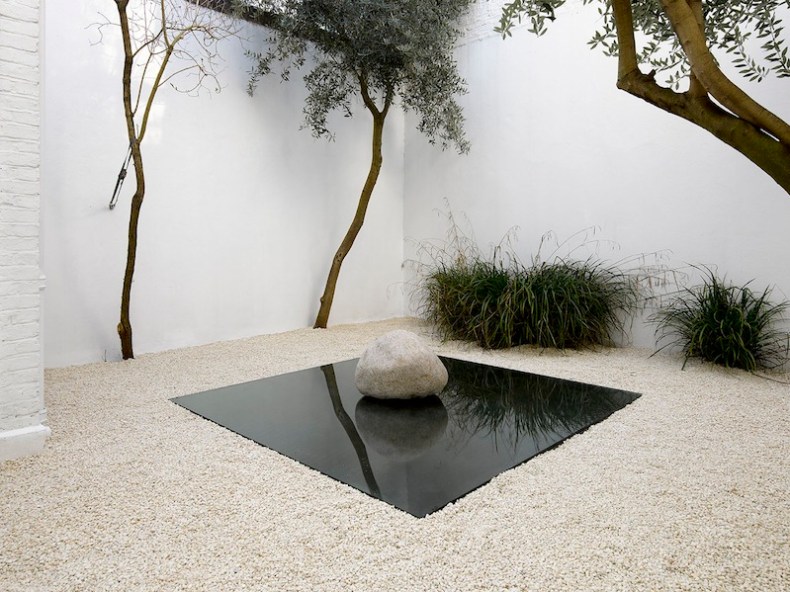
‘Relatum – Rest’. 2013, Lee Ufan, gravel, glass, steel, and stone, various dimensions. Courtesy Lisson Gallery, London; © the artist
There is a meditative quality in Lee’s art, a depth to its apparent simplicities. His installations are confrontations between human culture and nature, the present moment and eternity. In the museum dedicated to his work on Naoshima, the small island in the Inland Sea of Japan known for its displays of contemporary art, there is a room containing four works painted directly onto the walls. The idea is that you remove your shoes on entering, then just sit on the floor and contemplate. This museum is a close collaboration between Lee Ufan and the architect Tadao Ando. When the idea was first suggested, however, by Soichiro Fukutake, the billionaire who has funded and masterminded Naoshima’s transformation into a sort of modern art lover’s shangri-la, Lee was not enthusiastic. ‘Frankly speaking, at the beginning I was not at all interested in creating a museum of my work. When Mr Fukutake contacted me, I just replied “Let me see.”’ It was Tadao Ando who talked him into it, arguing that it would be an ideal way to realise various projects. ‘What I really wanted to make was a space like a cave. Something that would be like entering and leaving a tomb, or a human body. The final result is not a space conceived by an architect, with the artwork installed in it afterwards. Not at all. Ando couldn’t have done it on his own, nor could I. Our two sets of ideas were juxtaposed to create what you see. Fortunately, Ando is an old friend of mine, so there were no quarrels or disagreements. Our discussions went mysteriously smoothly.’
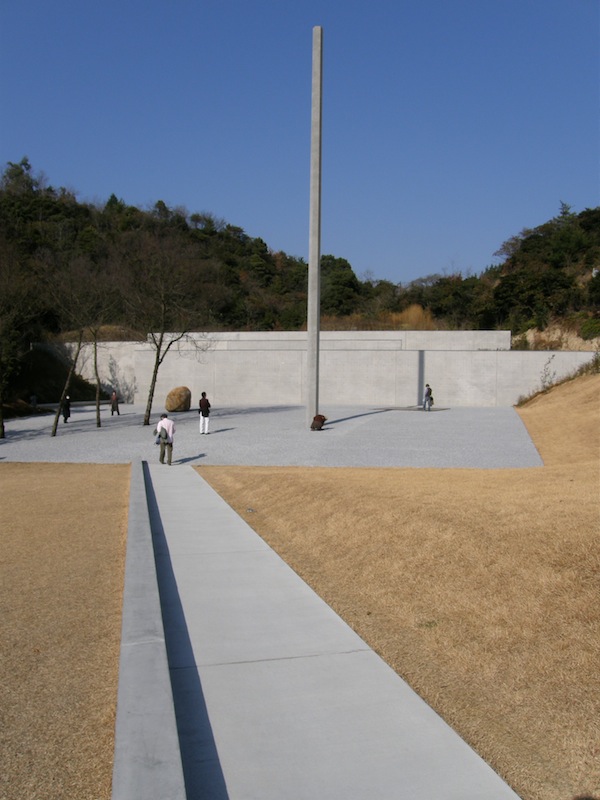
Lee Ufan’s works are permanently installed in the gardens of the Lee Ufan Museum, Naoshima, designed by Tadao Ando. Photo: Wikimedia commons
On the day I visited Naoshima, I had just been to Kyoto, where I had seen the ‘dry’ gardens of the Zen monasteries. The most celebrated of these, the Ryōan-ji, consists of 15 natural stones in a field of immaculately raked white gravel. Was there a connection – I couldn’t help asking – between this and his own work? Again, he rejected the association, just as he had with Jackson Pollock and Barnett Newman’s abstraction. ‘No connection at all. Although you know I was born in Asia so even if I say “No, not at all in a direct way”, maybe the atmosphere or the zeitgeist impregnated this feeling for stones into me. But as far as my work is concerned, it’s totally distinct. It is the result of my questioning how artists should express themselves in a contemporary world – nothing to do with Zen gardens.’
In an idiosyncratic way Lee Ufan is a truly global figure. Is there anywhere, I ask, among the various places where he has lived and worked, that he feels more at home? ‘At the very beginning I had difficulty because I didn’t speak certain languages or felt isolated, but now I don’t distinguish between good places and bad. Everywhere is similar – and anyway, I love to be alone.
Martin Gayford’s latest book is Rendez-vous with Art (Thames & Hudson), written with Philippe de Montebello.
Click here to buy the latest issue of Apollo
Unlimited access from just $16 every 3 months
Subscribe to get unlimited and exclusive access to the top art stories, interviews and exhibition reviews.

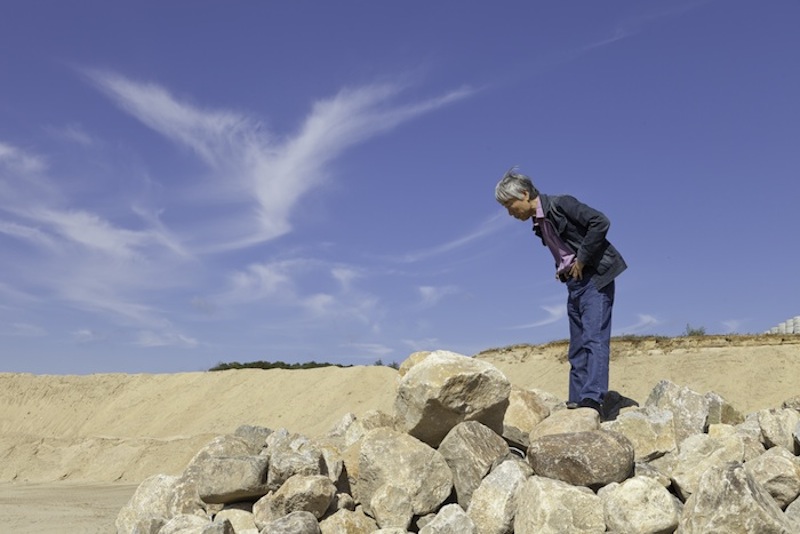
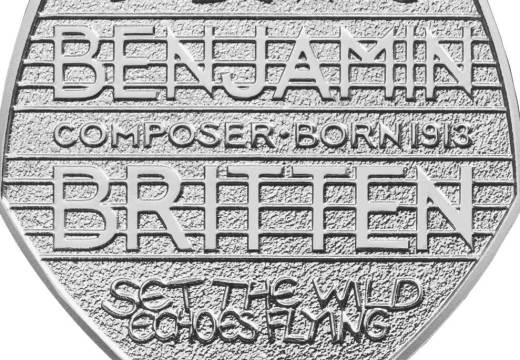
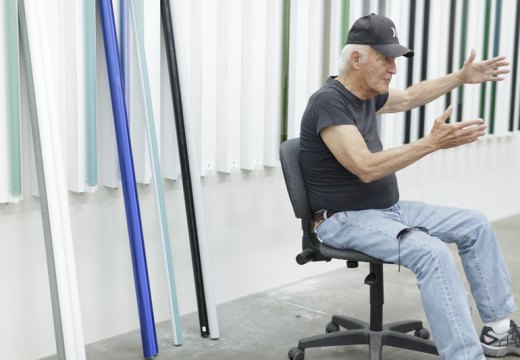
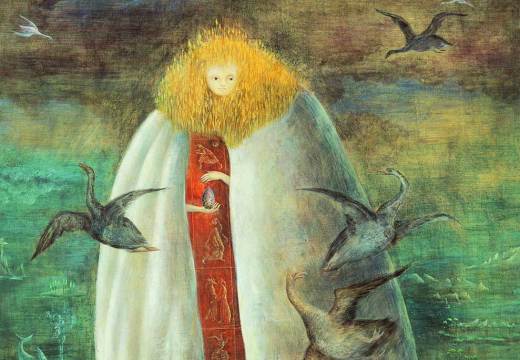









![Masterpiece [Re]discovery 2022. Photo: Ben Fisher Photography, courtesy of Masterpiece London](http://www.apollo-magazine.com/wp-content/uploads/2022/07/MPL2022_4263.jpg)
It’s time for the government of London to return to its rightful home